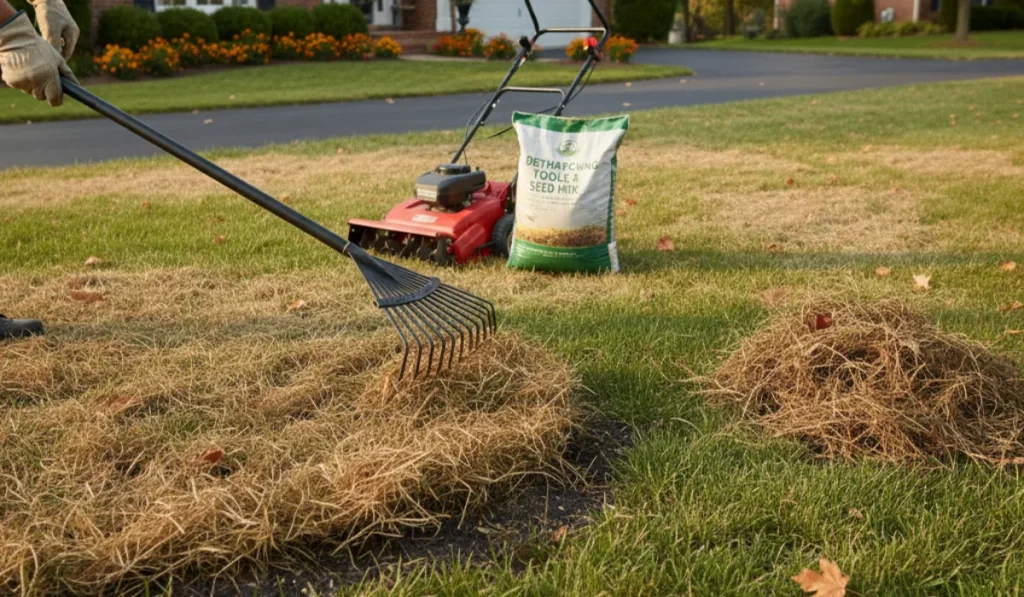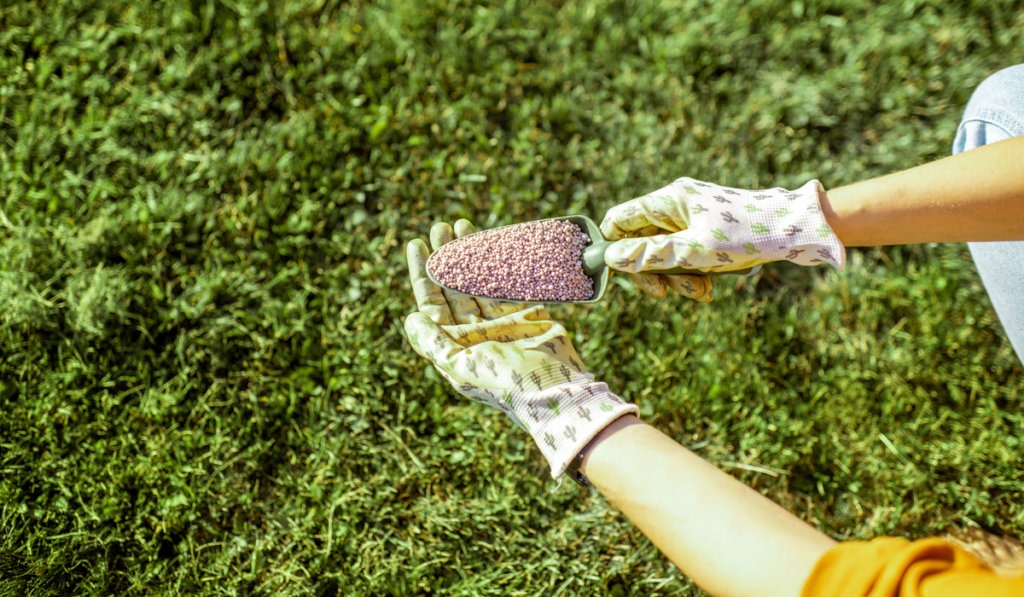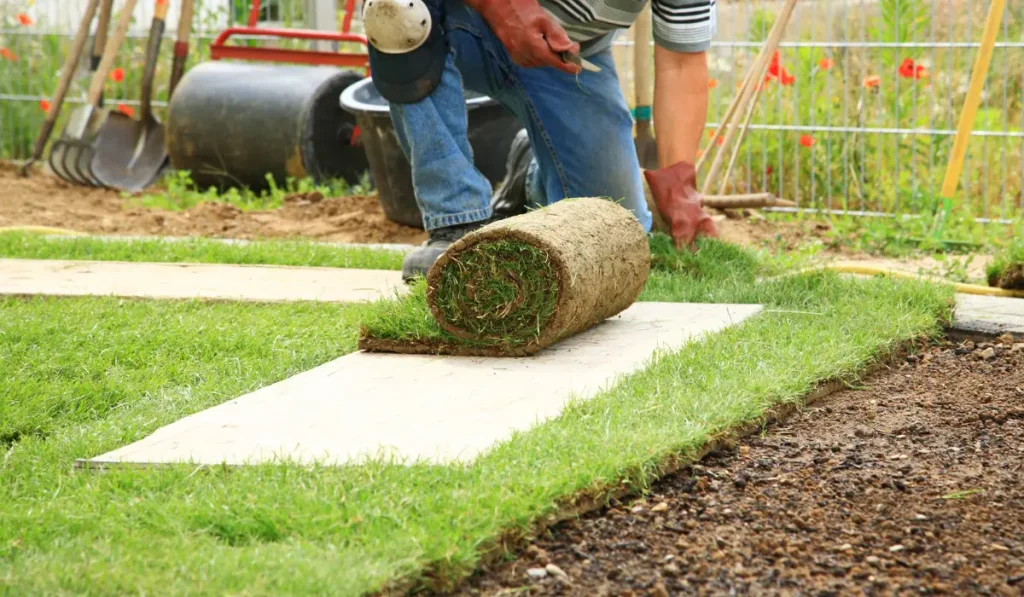When your new sod arrives, it usually comes stacked tightly on a pallet, ready for installation. But life gets busy, and sometimes laying it down immediately isn’t possible. So how long do you really have before fresh sod goes bad sitting on the pallet?
Let’s break it down so you don’t waste time—or sod.
Key Takeaways
- Sod stays fresh on a pallet for 24 to 48 hours before roots and grass start breaking down.
- High temperatures, full sun, and certain grass types can cause sod to dry out faster than expected.
- Bigger lawns take longer to cover, so planning delivery and prepping soil early can save your sod.
- Sod should never sit in the sun for long and must be installed quickly to avoid costly replacement.
How Long Can Sod Be Left on a Pallet?
Generally, sod can last on a pallet for 24 to 48 hours before it starts to decline. After that, you risk root damage, overheating, drying out, and even fungal growth, especially if it’s hot and humid.
Ideally, you should plan to lay sod the same day it’s delivered or picked up. That’s the best way to preserve freshness and ensure your new lawn roots successfully.
However, a few different things can impact how long your sod will hold up on the pallet. Here’s what to keep in mind before you get started.
Temperature and Time of the Year
The time of year plays a big role in how long sod lasts on a pallet. During cooler months, like early spring or fall, sod can often sit for up to 24 hours with less risk. But in the summer? That window shrinks fast.
Sod can heat up quickly when it’s stacked, especially St. Augustine sods. Temperatures inside a full pallet can climb high enough to cook the grass blades and damage the shallow roots before you ever get a chance to unroll it.
Type of Sod
Not all types of sod handle being left out on a pallet the same way. Some grasses, like fescue or zoysia, tend to hold up a bit longer due to their denser root systems. Others, like Bermuda, are more sensitive to heat buildup and dry out quicker.
That means the type of sod you’re using can make a difference in how fast you need to act. Always ask your sod farmer for recommendations based on the specific variety you’re installing.
How the Sod Was Cut and Stacked
The freshness of the sod when it’s loaded matters. Sod that’s been sitting at the sod farm too long after harvest won’t hold up as well after delivery. Tight stacking also reduces airflow and traps heat, accelerating decay.
If you see any yellowing or smell sour, compost-like odors coming from the sod pallet, it’s a sign the sod has started to go bad.
Square Footage and Project Scope
If you’re covering a large area—say over 2,000 square feet of sod—you might not be able to install everything in a single day. That’s when it’s helpful to plan your sod delivery in stages or have a team ready to lay sod as soon as it arrives.
Don’t forget to have sprinklers or a garden hose with a sprinkler attachment on standby. Right after laying your sod, aim to water deeply enough that the moisture penetrates at least 3 inches into the soil.
This encourages the roots to grow down into the soil, helping the sod establish more effectively, especially in the warmer months when evaporation happens fast.
Pallet Location and Sun Exposure
Where you leave the pallet can speed things up—or buy you a little more time.
If the pallet sits out in full sun, the grass blades on the edges will dry out fast. If you can, store the pallet in a shady area and lightly mist the top with water to keep the top layer moist.
Still, that’s just a short-term fix. Moisture helps, but it won’t stop the root system from breaking down if the sod stays stacked too long.
Your Lawn Prep Timeline
If your lawn isn’t prepped when the sod arrives, you’re already behind. New sod needs to go on freshly prepared soil to start rooting right away. Any delay in prep can cost you quality.
Before sod delivery, make sure your soil is graded, watered, and cleared of debris. That way, as soon as you pick up or receive your pallet of sod, you’re ready to lay it down and water it in.
Plan Your Sod Delivery the Right Way
Leaving sod on a pallet for too long is one of the most common mistakes first-time sod buyers make. It’s tempting to let it sit until you “have time,” but that can cost you more in the long run—dead grass, extra work, or even having to reorder.
If you’re planning a new lawn or sod installation soon, check out our new sod care guide and how much sod you’ll need per square foot to help plan your delivery right. And if you’re not sure when to schedule sod delivery, give us a call—we’ll help you time it right for your yard and the weather.
Got more questions about sod pallets, proper watering, or mower schedules? We’re here for all your lawn care needs.
Frequently Asked Questions
How can I tell if sod has gone bad before installation?
Signs of spoiled sod include a strong sour or moldy smell, yellow or brown grass blades, and a mushy texture. These indicate root decay and poor chances of successful rooting once installed.
Can I rehydrate sod that looks dry on the pallet?
While lightly misting dry sod may slow further drying, it won’t reverse damage already done. Sod with dried-out roots or crunchy grass blades is unlikely to recover or establish properly in your lawn.
What should I do if it rains on the day of delivery?
If the ground is too wet to install sod, store the pallet on a shaded, dry surface with airflow. Avoid placing it directly on wet soil to help prevent premature root rot or overheating.



